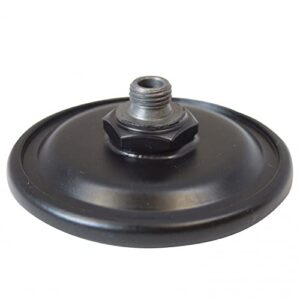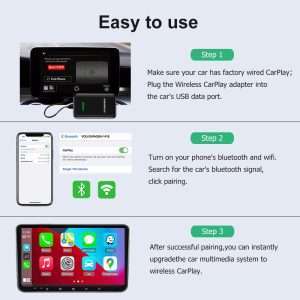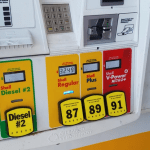Chevy Silverado owners often report issues with steering wheel peeling. This common problem can be both unsightly and uncomfortable.
Peeling steering wheels in Chevy Silverados have become an annoyance for many drivers.
The issue surfaces after regular wear and tear or exposure to extreme temperatures, causing the material to deteriorate and come loose.
Not only does this detract from the vehicle’s aesthetic, but it can also lead to a less grip, which can affect the driving experience.
Owners seeking solutions typically consider steering wheel covers or replacement as potential fixes.
Recognizing the need for durability and comfort, Chevy Silverado enthusiasts are consistently on the lookout for quality materials and professional repair options to address the peeling and ensure their steering wheel remains both functional and visually appealing.
Understanding Chevy Silverado Steering Wheel Peeling
Chevy Silverado owners often encounter steering wheel peeling, a frustrating issue that can detract from the vehicle’s aesthetic.
Deterioration of the steering wheel material not only affects comfort but also impacts the resale value.
- UV Damage: Direct sunlight can cause the steering wheel surface to wear down.
- Wear and Tear: Regular usage leads to the degradation of the wheel’s surface.
- Chemical Cleaners: Harsh cleaning agents may accelerate material deterioration.
Identifying Quick Fixes For Peeling Steering Wheels
Owners facing Chevy Silverado steering wheel peeling can find straightforward fixes with proper repair techniques.
Tackling this common issue enhances both the vehicle’s aesthetics and the driver’s grip comfort.
| Cost-effective Option | Pros | Cons |
|---|---|---|
| DIY Repair Kits | Lower cost, personal satisfaction of self-repair | Time-consuming, potential for imperfect results |
| Professional Restoration | High-quality finish, longevity of repair | More expensive than DIY, requires appointment |
Diy Repair Methods For Peeling Steering Wheel
Restore your Chevy Silverado’s steering wheel with easy DIY fixes for peeling issues. Armed with simple tools and guidelines, you can renew your wheel’s grip and appearance at home.
Professional Solutions For Peeling Steering Wheel
Dealing with a peeling steering wheel can be frustrating, but there are professional solutions available. Here’s a guide with points on addressing and resolving the issue:
1. Leather Steering Wheel Repair Kit:
- Purchase a professional leather steering wheel repair kit designed to fix peeling or damaged leather surfaces.
- These kits typically include materials like leather filler, adhesive, and color-matching compounds.
2. Identify the Cause:
- Understand the cause of the peeling, whether it’s due to age, UV exposure, or excessive wear.
- Knowing the cause can help in selecting the appropriate repair method.
3. Clean the Steering Wheel:
- Thoroughly clean the steering wheel using a gentle leather cleaner to remove dirt, oils, and any residue.
- Ensure the surface is dry before proceeding with repairs.
4. Sanding and Preparing the Surface:
- Use fine-grit sandpaper to smooth the peeled or damaged areas.
- Follow the instructions in the repair kit to prepare the surface for the application of filler or adhesive.
5. Apply Leather Filler:
- Apply the leather filler from the repair kit to the sanded areas.
- Smooth it evenly and allow it to dry completely, following the kit’s instructions.
6. Color-Matching:
- Use the color-matching compounds provided in the kit to match the repaired area to the rest of the steering wheel.
- Mix the compounds as directed to achieve the closest color match.
7. Apply Adhesive:
- If the peeling is severe, use the adhesive included in the repair kit to bond the layers of leather back together.
- Follow the kit instructions for proper application.
8. Buffing and Polishing:
- After the repair has dried, use a soft cloth or buffer to polish the steering wheel gently.
- This step helps blend the repaired area with the surrounding leather.
9. Protecting the Steering Wheel:
- Apply a leather conditioner or protector to the entire steering wheel to maintain its suppleness and protect it from future damage.
- Regular application of a UV protectant can prevent further peeling caused by sun exposure.
10. Professional Services:
- If the damage is extensive or if DIY solutions don’t yield satisfactory results, consider seeking professional services from auto upholstery or detailing shops.
- Professionals have access to advanced repair techniques and may be able to restore the steering wheel to its original condition.
11. Steering Wheel Replacement:
- In severe cases where repairs are not feasible or cost-effective, consider replacing the steering wheel with a new or refurbished one.
Frequently Asked Questions
Why Does My Silverado’s Steering Wheel Peel?
Peeling steering wheels in Chevy Silverados often result from wear and tear. Constant use and exposure to the elements can degrade the wheel’s material over time, causing it to peel.
Can I Fix A Peeling Silverado Steering Wheel?
Yes, peeling on a Silverado steering wheel can be fixed. Options include DIY repair kits, professional reupholstering, or replacing the wheel entirely. Choose based on your budget and desired finish quality.
What Causes Steering Wheel Wear In Trucks?
Factors causing steering wheel wear in trucks include frequent handling, UV light exposure, heat, and abrasive cleaners. High usage vehicles tend to show wear more quickly.
How To Prevent Steering Wheel Peeling?
Preventing steering wheel peeling involves regular cleaning with suitable products and using a steering wheel cover to protect from wear and UV damage.
Conclusion
The steering wheel is the focal point of your driving experience. A peeling Chevy Silverado wheel shouldn’t mar this.
With simple care tips and repair options, maintaining a pristine wheel is easy. Keep comfort and aesthetics aligned; address peeling issues promptly for a smooth ride and sharp interior.








